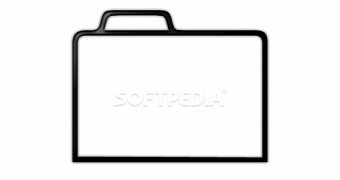Windows allows you to customize it in a fair amount of ways, not taking into consideration the abundance of existing third-party applications in this regard. Combinations are close to endless, and it’s all just a matter of creativity in combining different features.
Whether you like it or not, the desktop is where you get to spend most of your time, and the love for the desktop considerably increased when the first iterations of Windows 8 brought you directly to the Start Screen.
However, the desktop is always in danger of getting cluttered with too many icons and folders, and placing them in directory structures only makes it worse. Alternatives exist, with possibilities to create your own launcher, or just as you probably seen on the web, keep folders on the desktop, but without taking up all of your view.
Making a folder invisible
The first target in the process is the folder icon. This method can be combined with other customization options as well.
Step 1: Create a new folder with any name.
Step 2: Right-click the new folder to access its Properties panel.
Step 3: Switch to the Customise tab. In the Folder icons section, choose to Change Icon.
The default system location for Windows icons is %SystemRoot%\system32\SHELL32.dll with decent options to choose from.
Step 4: Scroll through the list of icons and look for blank spaces. There are four transparent icons and they are the ones you want. Select and preview them before pressing OK, because some are just white and can’t be differentiated in the list, unless they are selected.
Step 5: Press OK, Apply, and OK again to confirm and save your changes.
Note: In some scenarios the icon appears as a black box instead of a transparent icon. Try holding down Ctrl and using the Mouse Wheel to zoom in and out, restart Windows Explorer, or grab the transparent icon the guys at How to Geek put on the web.
Making the name invisible
Step 1: Right-click the folder you created and choose to Rename it, or hit F2 when selected.
Step 2: Remove everything, but don’t confirm changes. Leave renaming active.
Step 3: While holding down the Alt key, sequentially press 2 5 5 or 0 1 6 0 on the numpad. Make sure that NumLock is activated.
Step 4: Release Alt after typing the numbers. The folder now has a blank space it can use as a name. Confirm changes to have a folder with absolutely no name.
Note: Using the same combination for another folder results in a name conflict. You can either use the other command, or simply punch it in again. For more folders, just enter the code multiple times.
Using a notebook with no numpad:
Most laptops or notebooks don’t come with a numpad. However, there is a way to use a Windows built-in function that lets you use a set of normal buttons as numeric keys.
In fact, activating NumLock on a laptop is the only thing required to switch to this virtual numeric keypad. Some laptops might not do so by simply pressing the Num Lock button, or aren’t even equipped with one. Trying some of these combinations might work. When the Num Lock LED light is on, then you know it worked.
-> Fn + F11; -> Shift + Num Lock; -> Fn + F11 + Scroll lock; -> Fn + F8; -> Ctrl + F11; -> Fn + Shift + Num Lock; -> Fn + F4.
Note: You might even hear a beep sound on some laptops, but this is only to confirm that Num Lock is now active or disabled.
When active, some regular keyboard buttons change their function as follows:
| Keyboard Button | Numeric Alternative |
|---|---|
| 7 | 7 |
| 8 | 8 |
| 9 | 9 |
| U | 4 |
| I | 5 |
| O | 6 |
| J | 1 |
| K | 2 |
| L | 3 |
| M | 0 |
In conclusion
Visual customization is only a matter of creativity, but keeping everything clearly visible, pleasant, and not to affect any kind of activity. Even without third-party applications, possibilities are still endless, and it’s even a safer way to make your workspace represent you.

 14 DAY TRIAL //
14 DAY TRIAL // 



